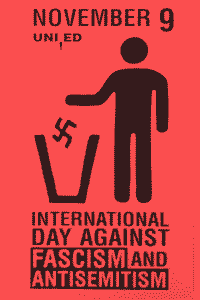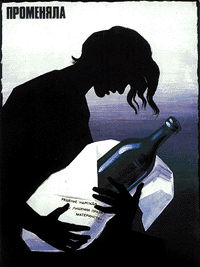posters
Branding Peace
![]() A publisher of graphic design books in Barcelona will soon produce a book compiling a selection posters against the war in Iraq designed by artists around the world. When soliciting submissions, the editor announced that profits from the book would be donated to Amnesty International.
A publisher of graphic design books in Barcelona will soon produce a book compiling a selection posters against the war in Iraq designed by artists around the world. When soliciting submissions, the editor announced that profits from the book would be donated to Amnesty International.
I informed the editor that it was a little strange for a book of anti-war posters to support an organization that never actually opposed the war. He was shocked to hear this.
He quoted from Amnesty’s Web site:
“In February 2003, before the start of the war, Amnesty International handed to the UN a petition signed by more than 60,000 people in nearly 200 countries and territories calling on the Security Council to assess the human rights and humanitarian impact on the civilian population of any military action against Iraq.”
This is true, but this is not the same as opposing the war. In fact, this actually implies that the invasion is just fine as long as the humanitarian and human rights impact is within some acceptable limit. This is consistent with International Humanitarian Law. Under IHL, a certain amount of “collateral damage” is assumed. You can kill plenty of civilians, as long as you are not specifically targeting them and have taken some measures to minimize harm.
Amnesty does wonderful work on behalf of prisoners around the world, but they are not an anti-war organization. They are not actually opposed to war, but war crimes. Contradictions abound: Amnesty opposes the use of land-mines as “inhumane,” but takes no position on nuclear weapons. Amnesty also recently launched a campaign to control the trafficking of small arms, though they say nothing about the general trade of large weapons.
The editor wrote, “I went through a list of charity organizations and Amnesty is one that gets one of the highest marks for how much money they use from donations for actual causes rather than promotion etc. Also, they were only one of many charities who responded to my query.”
I pointed out that Amnesty’s is not structured like other organizations. Amnesty’s London office does all the research and generates materials for advocacy, but does no fundraising or marketing at all. It is Amnesty’s autonomous national offices that do the fundraising and marketing. The national offices send a portion of their funds back to the international headquarters in London. Thus, if you looked at the international headquarters of Amnesty it would appear that they spent all of their money on program work and none on fundraising. This is true, but misleading.
I also noted that Amnesty is a well-funded organization. The budget of the its international headquarters was £23,728,000 in fiscal year 2002. That headquarters employs 410 staff. In contrast, many of the small organizations and coalitions that came together specifically to oppose the war are struggling to stay afloat and to keep the pressure on. These groups could use the money a lot more than Amnesty.
The editor considered my arguments and later circulated a poll to let the contributing artists decide who should receive the proceeds. He wrote:
“My original plan for the book was to donate a portion of the profits from the book to a non governmental organization (NGO) which could use the money to help promote peace, non-violence, and help people affected by war. There are many such organizations around the world and it has been very hard to choose one to be the recipient of this donation. I am hoping that you, the artists, can help me choose one of these NGOs and make this a truly democratic project.
The following is a list of NGOs which are internationally recognized and are currently making efforts to help the people in Iraq, either by organizing people against the occupation, or helping people on the ground.
- Amnesty International
- International Answer
- International Committee of the Red Cross
- Not in Our Name
- Oxfam
- Peace Action
- Stop the War Coalition
- United for Peace & Justice
- Win Without War
- War Resisters League
Of the organizations listed, Amnesty International is the only one that has neither opposed to the occupation nor delivered supplies and relief to the people of Iraq. Instead Amnesty asks the occupying forces themselves to ensure that provisions and medical supplies are delivered. Take a look at Amnesty’s own briefing paper on Iraq. Amnesty calls for oil revenue to benefit the people of Iraq, but does not name specific U.S. contracts and companies profiting instead. Amnesty calls for “justice and security,” but not for the transfer of power to the people of Iraq. Amnesty calls for investigations into cases of abuse by US and UK soldiers in Iraq, but would never call for Bush or his administration to be held accountable for the lies that put them there.
No matter. When the votes were tallied, Amnesty International won by landslide.
Peace People Japan
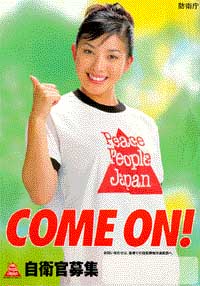 Wouldn’t it be great if we never had any need for a military? Failing that, how about a military forever sworn off of war? Japan’s military has done this for the last 50 years. This will soon change, however, as they enter the war in Iraq.
Wouldn’t it be great if we never had any need for a military? Failing that, how about a military forever sworn off of war? Japan’s military has done this for the last 50 years. This will soon change, however, as they enter the war in Iraq.
Article 9 of the constitution of Japan states:
“The Japanese people forever renounce war as a sovereign right of the nation and the threat or use of force as a means of settling international disputes.”
This is interpreted as permitting a standing army known as the Self-Defense Forces (SDF), but has prohibited those forces from being deployed outside of Japan or possessing nuclear weapons.
Still, with nearly 240,000 military personnel and an annual budget of nearly $50 billion in 2002, Japan’s military outstrips Britain’s in total spending and manpower. [source]
In the past Article 9 prevented the SDF from participating in military conflict and limited Japanese involvement to mostly financial support.
However, just as the United States wrote that constitution, Japan is slowly amending it under U.S. pressure.
“With each global ‘crisis,’ the Japanese government has taken the opportunity to enact new legislation to circumvent Article 9 and its clear renunciation of war.
One of the larger circumventions was the Peace Keeping Operations Law of 1992 which was passed during the Gulf War. This law allowed Japan to take part, if in a limited way, in United Nations-led peacekeeping operations. Other laws that have eroded the force of the Peace Provision are the 1999 law on Japan-U.S. security cooperation in dealing with emergencies around Japan, and the 2001 anti-terrorism special measures law.
The terrorist acts of September 2001 and the subsequent pressure from the United States has provided the latest opportunity for the Japanese government to pass legislation increasing the country’s legal right to conduct war.” [source]
Following the lead of the United States, the meaning of “self-defense” has now been expanded to include “pre-emptive” attack. In February 2003, Defense Minister Shigeru Ishiba warned that Japanese military would launch a pre-emptive military action against North Korea if it had firm evidence Pyongyang was planning a missile attack. It would be “a self-defense measure.”
In July 2003, the Diet approved a plan to send 1,000 troops to Iraq. The vote turned into an outright brawl on the floor between MP’s for and against the vote. (See the pic.)
This is not the first time Japan has cleaned up after a U.S. war. Japan gave $13 billion during the first Gulf War in 1991, but did not send troops. More recently, Japan deployed an SDF demining team to Afghanistan.
 Yesterday’s New York Times reports that deployment for Iraq is scheduled for early next year.
Yesterday’s New York Times reports that deployment for Iraq is scheduled for early next year.
That July article notes that the Japanese troops will help “resettling refugees, rebuilding and providing fresh water supplies that.” The Times, also states that the Japanese will “engage in unwarlike activities,” though ominously matches the article with photos of Japanese soldiers in camouflage make-up, members of an “antitank unit” during exercises in Japan.
The Times article also notes:
“Not one Japanese soldier has been killed, or has killed, in combat since the end of World War II.
That remarkable fact is being repeated here often these days, precisely because, as Japan prepares to send ground forces to Iraq, things could change in the near future. The death of a soldier, a sad though common reality for most nations, would be a pivotal point in Japan’s postwar history.”
 The “harmlessness” of military service, a deception implied by U.S. recruiting material, is actually thus far depicted honestly in SDF materials. Here are some links to some images of SDF posters. While U.S. recruiting posters sell adventure spiced with danger and travel, the pitch here displays neither — instead mixing the adventure with uniforms, aviation, and naval technology.
The “harmlessness” of military service, a deception implied by U.S. recruiting material, is actually thus far depicted honestly in SDF materials. Here are some links to some images of SDF posters. While U.S. recruiting posters sell adventure spiced with danger and travel, the pitch here displays neither — instead mixing the adventure with uniforms, aviation, and naval technology.
The posters also seem to sell the SDF as something like a sports club, a way to impress your country, kids, and co-eds, and, recently, a distinguished career option for women. And then there’s that bizarre sci-fi poster. But then I can’t read Japanese so could be totally misinterpreting the signs.
As the Japanese military is a “Self-Defense Force,” their logo brands them as keepers of peace. The SDF are “Peace People Japan.”
The posters have been removed from the SDF site so the links above point to the Web Archive.
However, this small collection of cuddly cartoon characters is still online.
The Women of Juárez Demand Justice
From Daoud Sarhandi in the Autumn 2003 issue of eye magazine:
‘Femicide’ posters
“El Paso, Texas, and Ciudad Juárez, a city of 1.5m people in the northern Mexican state of Chihuahua, are less than four km apart. Yet no two cities could be economically further apart. The shantytowns spread out around Juárez are home to a vast number of indigenous migrant workers who come there from the unemployment black spots of the agrarian south. Many hope to go further, ‘la otro lado’ [to the other side], but most get stuck in the slums, working all hours, earning barely enough to survive.
Women — many as young as fourteen — comprise 70 per cent of the Juárez workforce. They eke out a four-dollar-a-day living in the maquiladoras — sweatshop factories that have mushroomed along the border since Mexico signed up to the North American Free Trade Agreement in 1992. Yet in addition to exploitation and squalor, the women of Ciudad Juárez are oppressed by a murder rate that has attracted worldwide revulsion.
 Statistics show that since 1993, at least 300 young women have been kidnapped, raped and killed — their bodies often defiled. Some 190 of these murders have occurred in the past six months; during the same period nearly 100 more have gone missing, presumed dead. The real toll may be higher, since many women do not have families living locally and their disappearances can go unnoticed and unreported. An open letter sent to the Interamerican Commission on Human Rights by angry Juárez residents puts the ‘disappeared’ figure at 450 in the past ten years.
Statistics show that since 1993, at least 300 young women have been kidnapped, raped and killed — their bodies often defiled. Some 190 of these murders have occurred in the past six months; during the same period nearly 100 more have gone missing, presumed dead. The real toll may be higher, since many women do not have families living locally and their disappearances can go unnoticed and unreported. An open letter sent to the Interamerican Commission on Human Rights by angry Juárez residents puts the ‘disappeared’ figure at 450 in the past ten years.
In the face of almost unbelievable official apathy and police incompetence, a group of graphic designers from Mexico City invited colleagues to express their concern and outrage by designing posters around the slogan ‘The Woman of Juárez Demand Justice’.
The first design activity — initially proposed by Rafael López Castro — was timed to coincide with last year’s International Day for the Elimination of Violence Against Women (25 November 2002), when protest marches against the Juárez killings took place in several towns. Nine designers produced a series of images for a support group working in Ciudad Juárez, which then distributed them to other groups dealing with domestic violence. Alejandro Magallanes and Leonel Sagahón, two designers at the centre of this project, point out that the designers gave away their images, encouraging the protest groups to apply their own text and messages.
Organised by Arnulfo Aquino and Xavier Bermúdez to mark International Women’s Day, the second event took place in March 2003. An exhibition of more than 60 large-format images by designers from all over the country was staged in a Mexico City metro station. Displays and exhibitions are often mounted in these big spaces: in a city of 20m-plus they are seen by huge numbers of people who may not often visit museums and galleries. Though Magallanes and Sagahón find several of the posters totally inappropriate, even offensive, no designs were censored from the exhibition.
López Castro notes an honest, if sometimes naíve, attempt to deal with a tough issue: the relationship between the sexuality of young, poor women, rape and murder. It has often been observed that the victims fit a series of patterns: apart from the fact that almost all come from the lower economic strata, the majority are in their teens, slim, attractive, and with long dark hair. Irresponsible local officials in Chihauhau have often blamed the girls themselves for the killings, citing the fact that they were out late and alone, or were wearing short skirts and make-up. Many designers saw these crimes — and the official reaction — as an attack on femininity itself.
López believes that the strength of this project rests in its role as a ‘collective shout’, intended to wake up the general population and the authorities. ‘It is important to see real problems,’ says Sagahón, ‘not just ‘design’ and ‘communication’ problems. We are designers, but we are also citizens, and we are also people.’
‘It was amazing,’ says Magallanes, ‘to see whole families standing in front of these posters and talking about this very difficult subject.’ One outcome of this publicity is that rather than continuing to rely on the hopelessly ad hoc investigative methods of the Chihuahua law enforcement agencies, the office of the Federal Prosecutor has now decided to investigate a number of the murders on behalf of the national government. Yet the murder phenomenon — or ‘femicide’ — shows no sign of abating. On the contrary, chillingly, it seems to be spreading to other northern Mexican towns with similar socio-economic conditions.”
The Center for the Study of Political Graphics has posted images of 60 posters online.
For more information on the violence in Juárez, see juarezwomen.com and womenontheborder.org.
Daoud Sarhandi is a co-author of Evil Doesn’t Live Here: Posters of the Bosian War.
Art, Organizing, and Memory
Ricardo Levins Morales, from an abstract of Art, Organizing, and Memory:
“The telling of history is more than an exercise in documentation. It has always been an important element in shaping history. Historical narrative provides important information about both specific tactics and strategies and broader possibilities for action. Consequently, the struggle to control the memory of events is an important element of social conflict.
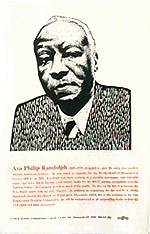 The Northland Poster Collective participates in this aspect of social (particularly workplace) struggles on three levels. Working with organizers and rank and filers we help them to identify and redefine the workplace narrative. To effectively organize, it makes a difference whether workers see themselves as part of a big, happy family; as engaged in a David vs. Goliath struggle; as rugged individuals who must each make their own way; as a community of interest in an exploitative environment, etc. Art, humor, and creative tactics can create a receptive atmosphere organizing and leadership development.
The Northland Poster Collective participates in this aspect of social (particularly workplace) struggles on three levels. Working with organizers and rank and filers we help them to identify and redefine the workplace narrative. To effectively organize, it makes a difference whether workers see themselves as part of a big, happy family; as engaged in a David vs. Goliath struggle; as rugged individuals who must each make their own way; as a community of interest in an exploitative environment, etc. Art, humor, and creative tactics can create a receptive atmosphere organizing and leadership development.
Telling untold (or miss-told) stories that can suggest avenues for action. Even when figures or events from social struggles are integrated into mainstream teaching they are presented in ways that emphasize individual heroics and chance. Our classroom posters focus on the collective action, planning, and community connection that offer a more reliable roadmap for creating change. By our choices of what stories to depict we help to challenge widely held notions about who is an actor in history.
Posterfolio sets help to bring more depth of knowledge (and curiosity) about events that people may know of only superficially. Posters that challenge deeply held assumptions. Less immediate in their impact, these may illustrate word definitions or the histories of everyday items, foods, etc. Seemingly innocuous, these posters contain layers of social history and suggest connections to other peoples that are absent from mainstream and commercial culture.
Making use of history as a lever for real change requires strategies for its dissemination. Our approach has been to use our relationships with schoolteachers, unions, and community organizations to distribute the work that we produce. These networks are also the source for information on the needs of the people at the front. Organizing seeds have a hard time growing in hostile soil. Tending to the cultural soil of the workplace, community, and broader society is a long-term and essential element in any strategy for change.”
Design against Corruption
Let’s say the president of your country is corrupt. Let’s just say.
 The legislature is corrupt. The court system, police, and military are all corrupt. The city officials? The big businesses? They’re corrupt, too.
The legislature is corrupt. The court system, police, and military are all corrupt. The city officials? The big businesses? They’re corrupt, too.
They misuse their power. They thrive on favoritism and get rich on kickbacks while the rest the country slowly starves. What do you do?
Replacing one individual with another doesn’t change the broader system or take away any of the incentives for corruption.
So how do you reduce corruption throughout a given system?
Transparency International is a network of independent national chapters that work to curb “both the supply and demand of corruption.”
Some of the strategies they use are described in their annual Corruption Fighters’ Tool Kit. The manual is just one of the ways the TI chapters share ideas with each other and offer their experience to the world at large. In addition to the hard work of organizing and building coalitions, many of the corruption-reducing strategies incorporate graphic and interactive design. Some of them include:
- Awareness Raising - TI Korea produced posters, videos, and CD-ROMs to disseminate information about the effects of corruption and local initiatives against it. TI Morocco indexed, cataloged, and analyzed incidents of corruption that appeared in the media, published their findings and will soon make this database accessible online. As part of its campaign to promote access to information in Romania and the Federal Republic of Yugoslavia, TI Romania produced and actively updated a Web site on the issue, printed a pocket guide to inform citizens about their rights, and designed posters and flyers with their Serbian partner organization to promote the idea of free access to public information and raise public awareness about the project. The posters were printed in Romanian and Serbian and distributed through an international network of NGOs and local government offices.
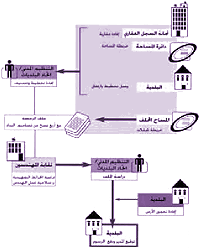 Monitoring Election Campaigns - TI Chile developed and distributed a report card to tabulate the quantity, subject, and context of media coverage devoted to each candidate. They distributed their analysis and data on CD-ROM.
Monitoring Election Campaigns - TI Chile developed and distributed a report card to tabulate the quantity, subject, and context of media coverage devoted to each candidate. They distributed their analysis and data on CD-ROM.- Opening Processes - Activists in Lebanon determined that construction was the most corrupt sector in the country and designed a manual on how to acquire a construction permit, “one of the most difficult bureaucratic transactions in the Lebanese administration.” In response to the government’s lack of reliable information on the process of public procurement, TI Ecuador created an Web site to inform the public (and the private sector), make government forms available, display past and current bidding processes, and host a forum for discussion and analysis.
- Implementing Diagnostics - TI chapters in Bangladesh, Kenya, and Japan developed surveys and metrics for corruption in government and the private sector that they then published locally. TI Lithuania created a database of institutional and geographic aspects of corruption and published a “Map of Corruption” as a foundation for future campaign work.
Fed Up with The Front
Since 1991, Ras l’front (“Fed up with the Front”) has campaigned against Jean-Marie Le Pen and his extreme right-wing party, the National Front. Ras l’Front collectives are active in cities throughout France.
See this collection of their posters on racism, fascism, sexism, immigrant rights, and other issues.
Uncle Sam

From the Committee to Help Unsell the War, 1971.
Download the image above as a 782 x 1024 pixel TIFF (2.3 Mb) from the Library of Congress.
Posters in Beirut

From the Association Typographie Internationale conference in Vancouver this weekend, a description of one presentation:
“A strong plurality of visual typographic styles and rhetorical strategies emerged after the war in Beirut. Lebanese are so sensitive now about the ethnic hatred which sparked off the war that they have been reluctant to speak up about it, yet they are tagging the streets of the city with slogans as a means of expression.
In this presentation Yasmine Taan analyses how ‘untrained designers/typographers’ have chosen the appropriate ‘typefaces’ whose diverse styles powerfully reflect the context of their messages, giving voice to the political aspirations of the inhabitants.”
A preface to this can be seen in the images of political posters in the American University of Beirut Jafet Library Poster Collection.
The posters were collected from the 1960s through the 1980s, before and during the war, from their original sources and from the American University of Beirut campus where they were posted. The collection covers two main topics: the Palestinian Question, and Lebanon and the Lebanese Civil War.
A few images are online, organized as follows:
(Clip) Art for Activists
From Riniart.org:
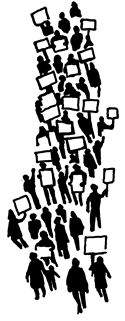 “For 20 years, Rini Templeton made drawings of activists in the United States, Mexico and Central America while she joined them in their meetings, demonstrations, picket lines and other actions for social justice. She called her bold black-and-white images ‘xerox art’ because activists and organizers could copy them easily for use in their banners, signs, leaflets, newsletters, even T-shirts, whenever needed.
“For 20 years, Rini Templeton made drawings of activists in the United States, Mexico and Central America while she joined them in their meetings, demonstrations, picket lines and other actions for social justice. She called her bold black-and-white images ‘xerox art’ because activists and organizers could copy them easily for use in their banners, signs, leaflets, newsletters, even T-shirts, whenever needed.
Her drawings also included workers, women and children, celebrations, scenes of town and country, many images from daily life. In all her work you can feel a unity with grassroots people across national and racial lines. She almost never signed a drawing, out of typical modesty. As a result, her style is widely recognized but her name is not.
Two years after she died in Mexico in 1986, Rini’s work was published in a bilingual book in the U.S. (Real Comet Press, Seattle) and Mexico (Centro de Documentación Gráfica Rini Templeton). Entitled The Art of Rini Templeton: Where There is Life and Struggle/El Arte de Rini Templeton: Donde hay vida y lucha, the U.S. editorial coordinator was Elizabeth (Betita) Martinez. The Mexican team included 5 editors from the Punto Crítico magazine collective together with a production coordinator. All had worked with Rini extensively.
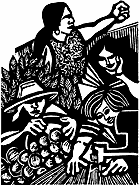 With the book out of print, it was decided to continue making her work available through this web-site. Rini’s sister, Lynne Brickley, made that possible with generous support.
With the book out of print, it was decided to continue making her work available through this web-site. Rini’s sister, Lynne Brickley, made that possible with generous support.
You will find 600 drawings here, organized by theme, with brief texts in English explaining the story behind each set of drawings. There is also a short biography about Rini. Photos of her sculptures, done before she switched to graphic work, are not included here nor are the many reminiscences of Rini written by friends and co-workers for the book.
In the spirit of Rini Templeton’s life and work, activists serving causes that Rini would have supported are invited to use drawings freely in their leaflets, newsletters, banners and picket signs or for similar non-commercial purposes. Those wishing to use drawings in the production of an item for sale, such as a book, should write to the Rini Templeton Memorial Fund, c/o Elizabeth Martinez, 3545 24th Street, San Francisco, CA 94110. A reasonable fee will be asked, to help maintain this web-site.”
Viva Rini.
To Your Health!
“Exchanged”
Yuri Matrosovich has a collection of 34 anti-alcohol posters from Russia on his Web site. The posters date from the early 1980’s, mostly from a ‘propaganda pack’ one could get when one joined a special anti-alcohol society. In those years, he writes, one was pushed to be a member.
In 1985, Mikhail Gorbachev launched a massive anti-alcohol campaign in the Soviet Union. The goal was not just to reduce alcohol consumption by the population, but to sharply decrease state production and sale of alcoholic beverages, to suppress the production of illicit alcohol, and ultimately, to raise worker productivity and buttress the economy.
Though the campaign fizzled out by 1988 and is generally derided today, this study charts the impact on both alcohol consumption and overall mortality in the Soviet Union.
Annual per capita alcohol consumption dropped from 14.2 liters in 1984 to 10.5 liters in 1986. Overall mortality declined from 1161.6 deaths per 100,000 population in 1984 to 1054.0 in 1986.
This was also during the social upheaval brought on by Gorbachev’s reforms, aka perestroika. Following this, in the period of the “market reforms” both alcohol consumption and overall mortality increased sharply. By 1997, per capita consumption had returned to the initial level of the early 1980’s.
The authors of the study estimate that 1.22 million people were spared between 1986 and 1991, 11.4% of the number of deaths expected without the anti-alcohol campaign.
Two more of my favorites:
|
“The Reason — Drunkenness!” |
“Alcohol — Enemy of Production” |
page 19 18 17 16 15 14 13 12 11 10 9 8 7 6 5 4 3 2 1 Older »


